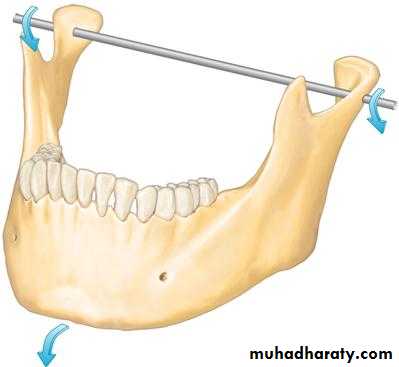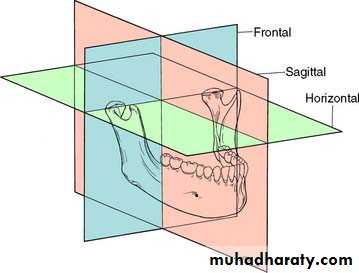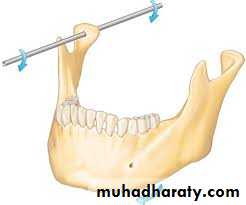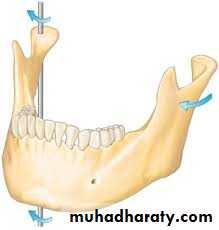TEMPOROMANDIBULAR JOiNT
ANATOMY&
physiology
Dr.shanai M.
It is the articulation of the condyle of the mandible, and the inter-articular disc; with the mandibular fossa (glenoid fossa) of the temporal bone.The TMJ consist of the following parts:
Mandibular condyleGlenoid fossa of Temporal bone
Articular disc or Meniscus which found between the condyle and the glenoid fossa.it divides the synovial joint or TMJ into upper (superior) and lower (inferior) compartments.
The TMJ can be divided into
1.passive components:A. bone
Mandibular fossa.
Condyle
Articular eminence.
B. capsule and ligaments
C. articular disk.
2. Active components
A. Masticator musclesMasseter
Temporalis
Medial pterygoid
Lateral pterygoid muscles
B. Additional muscles
The ligaments that effect the movements of the mandible consist of:
1. Major ligaments
Temporomandibular and capsular ligaments.
2.Minor ligaments:
Sphenomandibular ligament.
Stylomandibular ligament.
Other ligaments
Oto mandibular ligament.
Disco malleolar
Mallelo mandibular ligaments
The mandibular bone has specific relationships to the bones of the cranium. The mandible is connected to the cranium at the two temporomandibular joint by the temporomandibular and capsular ligaments. the sphenomandibular and stylomandibular ligaments also connect the bones in such away as to limit some motions of the mandible.
The muscles that control the movement
There are three groups of muscles• Closing muscles.
• Gliding muscles.
• Opening muscles
Closing muscles (muscles that cause elevation of mandible)
A. The temporalis
B. masseter
C. medial pterygoid muscles supply the power for pulling the mandible against the maxilla (elevating and closing the mandible).
Opening muscles (muscles that depress mandible)
The lateral pterygoid musclesSuprahyoid muscles
Platysma muscles
Infrahyoid muscles
The muscles that cause protrusion of mandible
Lateral pterygoid muscleMedial pterygoid muscle
Masseter (superfacial fibers)
The muscles that cause retraction of mandible:
Posterior fibers of temporalis muscle
Masseter muscle (deep fiber)
Side to side movements (grinding and chewing)
Temporalis muscle on same side.
Pterygoid muscles on opposite side
Masseter muscle
Good prosthodontic treatment bears a direct relation to the structures of the temporomandibular articulation, since occlusion is one of the most important parts of treatment of the patients with complete dentures.
The temporomandibular joints affect the dentures and likewise the dentures affect health and function of the joints.
Mandibular axis and mandibular movements
There are three axis around which the mandibular movements take place (sagittal, transverse (horizontal), and coronal (frontal))1- Hinge axis or transverse axis
It is an imaginary line around which the mandible may rotate within the sagittal plane (during opening and closing movement).
2- Sagittal axis of the mandible
It is an imaginary anteroposterior line around which the mandible may rotate within the frontal plane.
3- Vertical axis of the mandible
It is an imaginary line around which the mandible may rotate through the horizontal plane.Mandibular movements
Mandibular movements can be divided into two types either basic or functional movement1. Basic movements occur at the level of TMJ it may be divided into two types
A. Rotational Movement: that occurs between the condyle and the inferior surface of the articular disk, i.e. in the lower compartment of the TMJ.
B. Translatory or gliding movement: it takes place in the upper compartment of TMJ, i.e. between the superior surface of the articular disk and the glenoid fossa
2. Functional Movement: all mandibular movements except the terminal hinge movement, are combination of rotational and transitional, are most frequently and are referred to as being functional movements. They include
A. Opening and closing movement.
B. Symmetrical forward and backward movements.
C. Asymmetrical side wise movement or lateral movement
T H A N K
YOU












